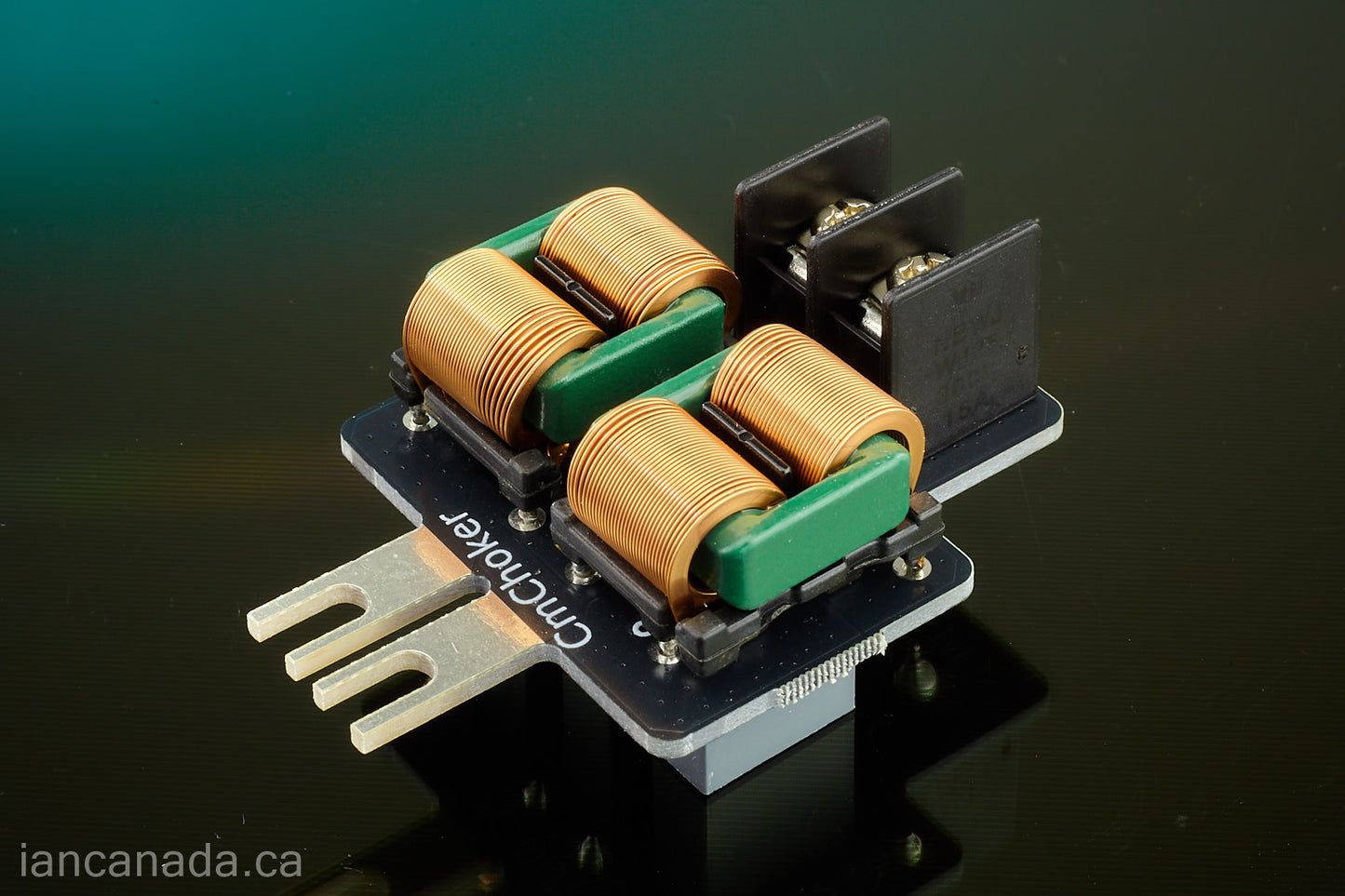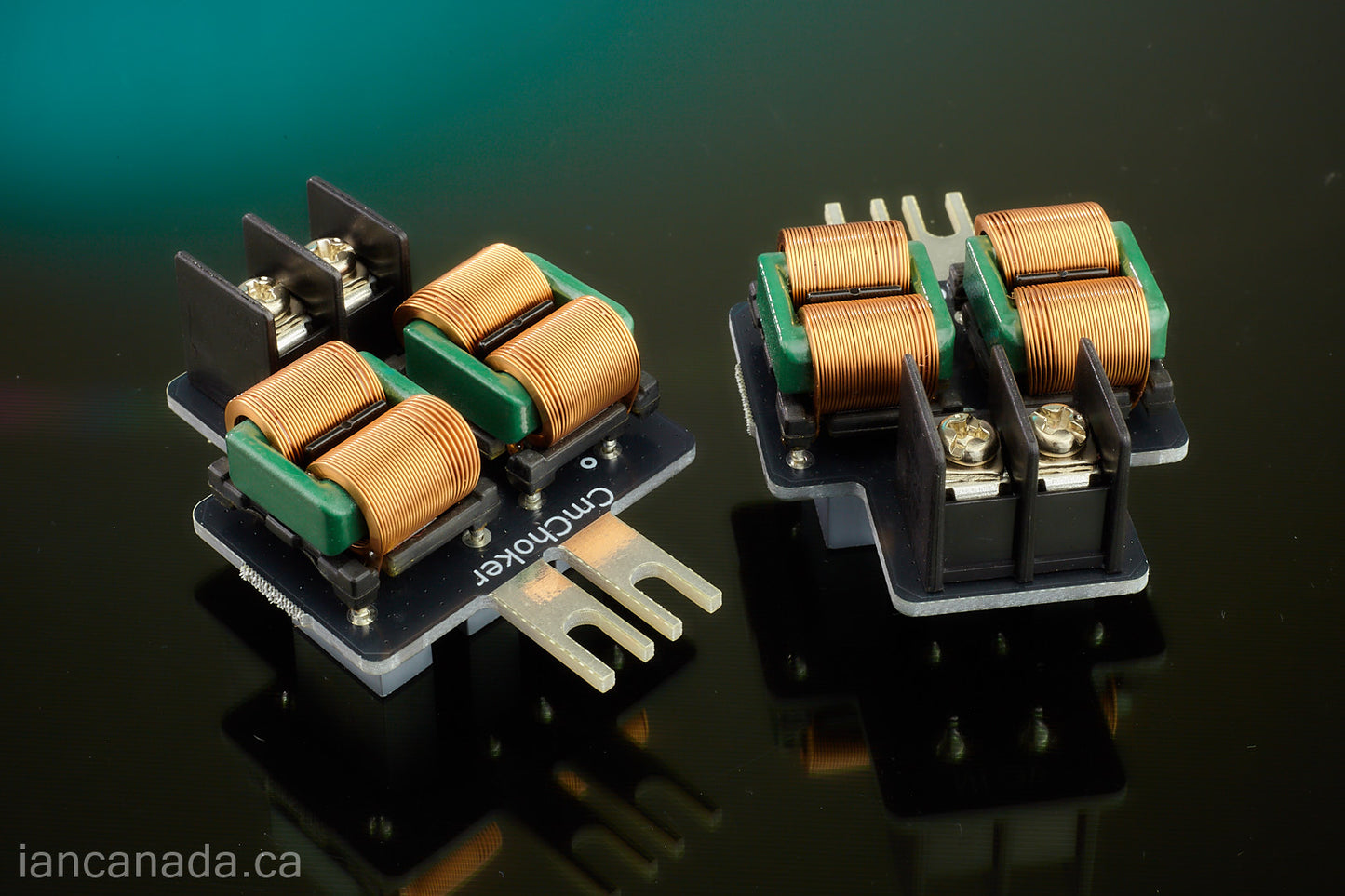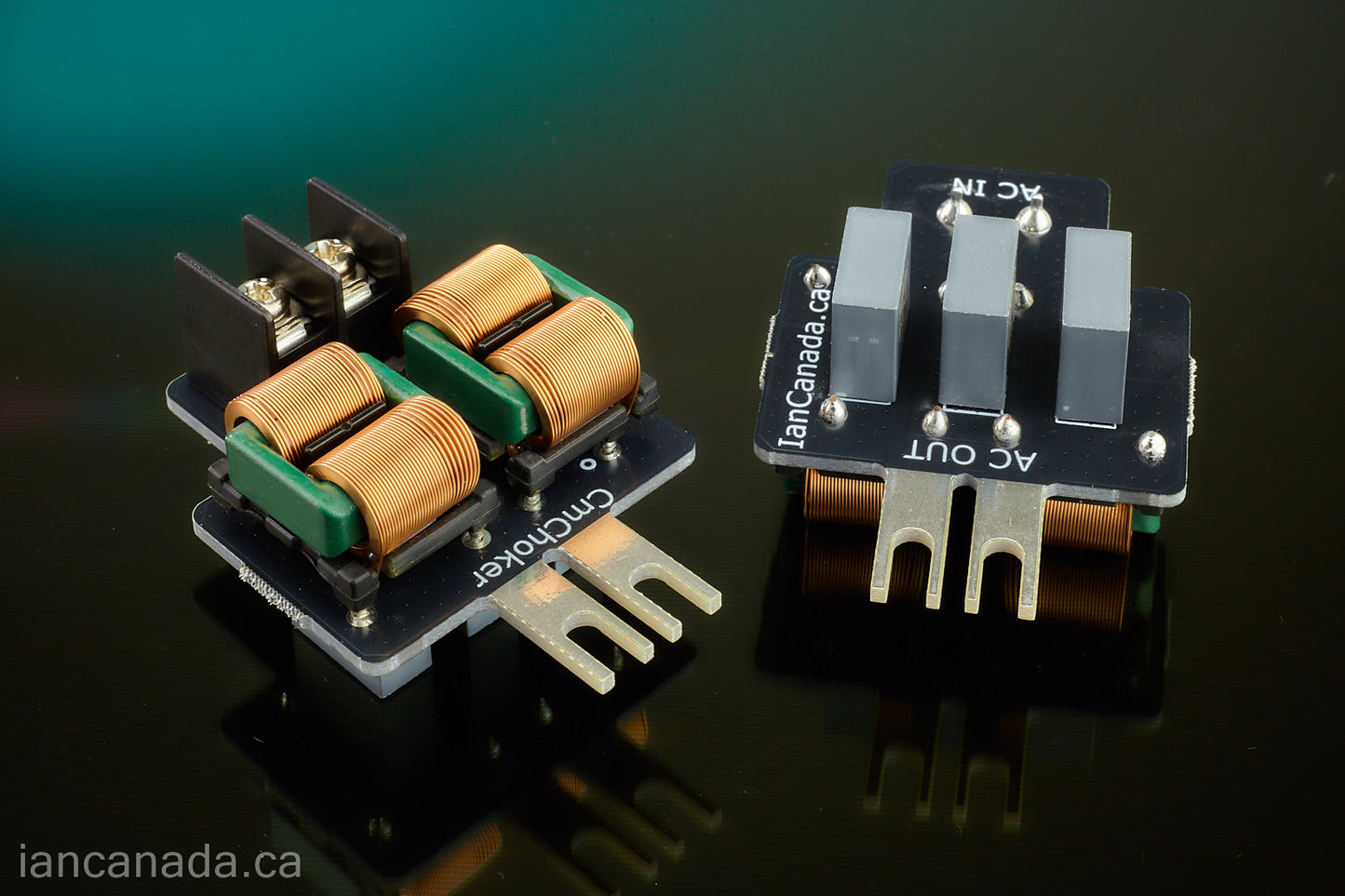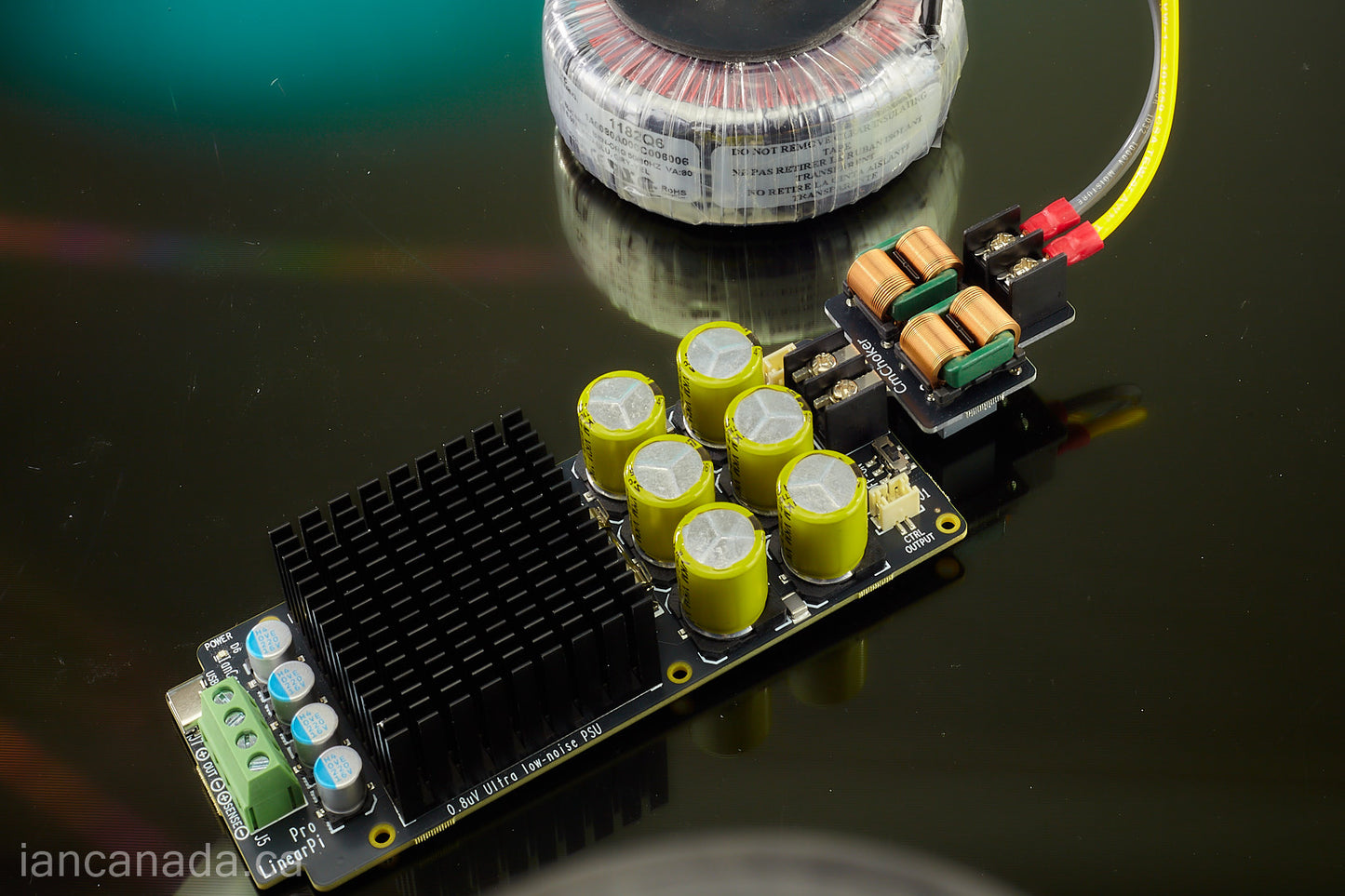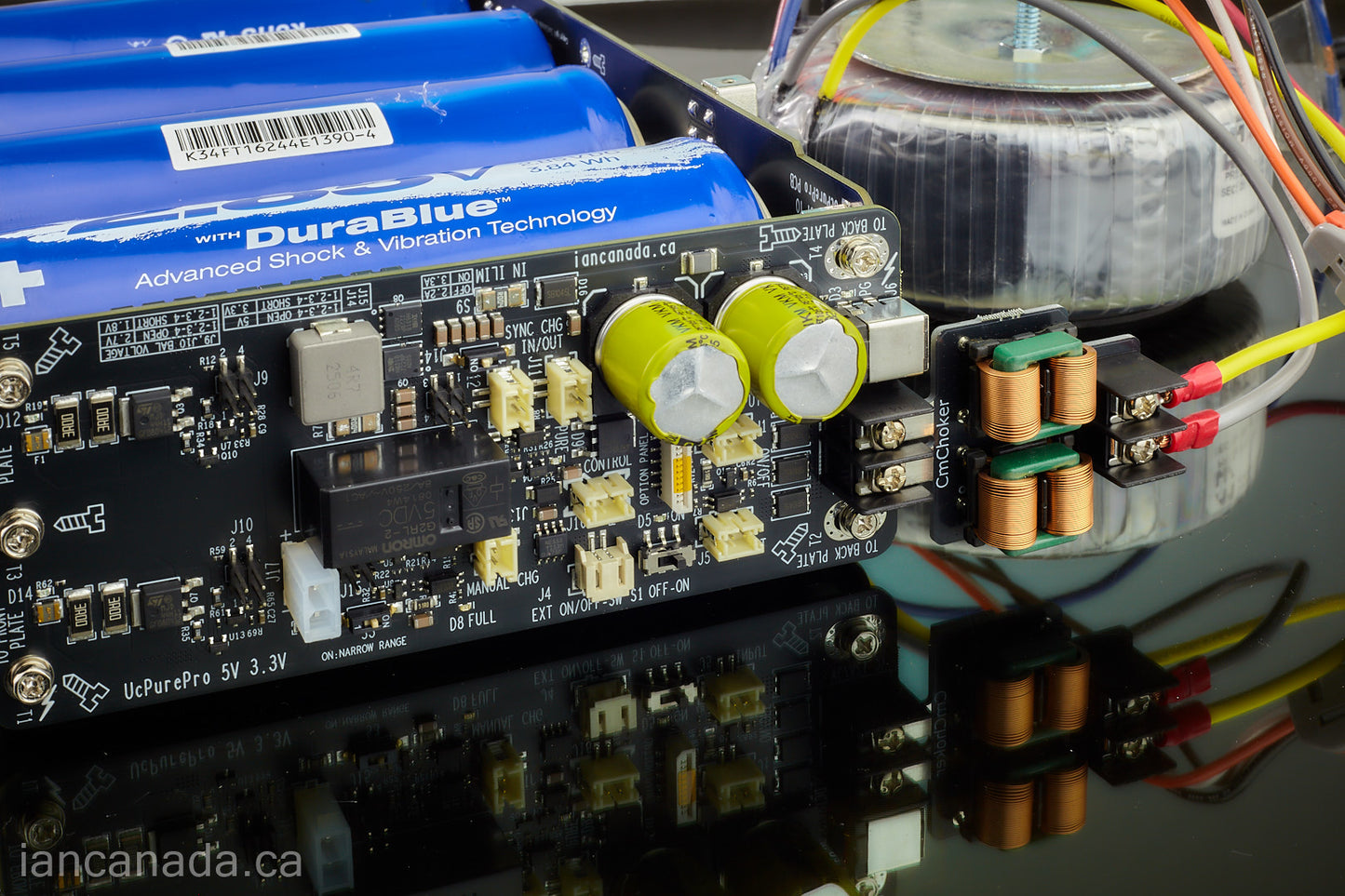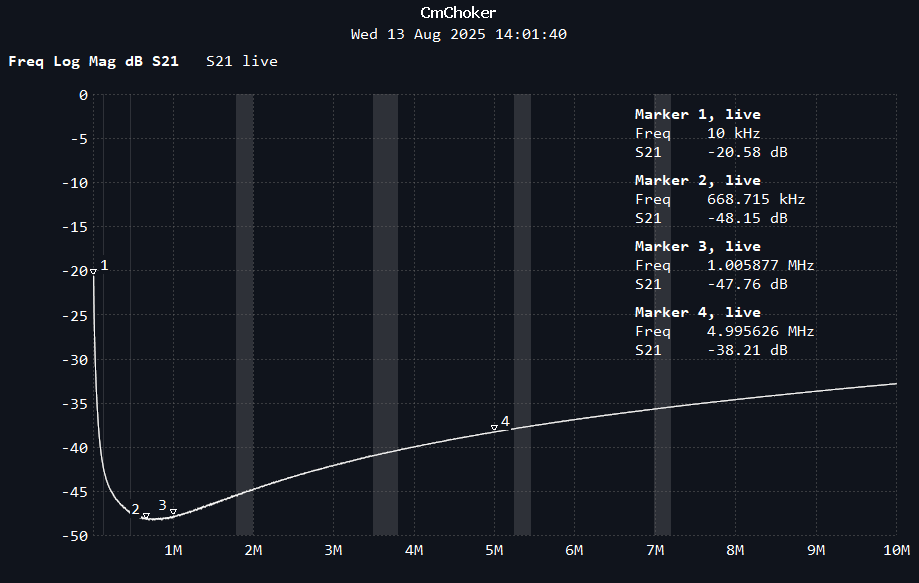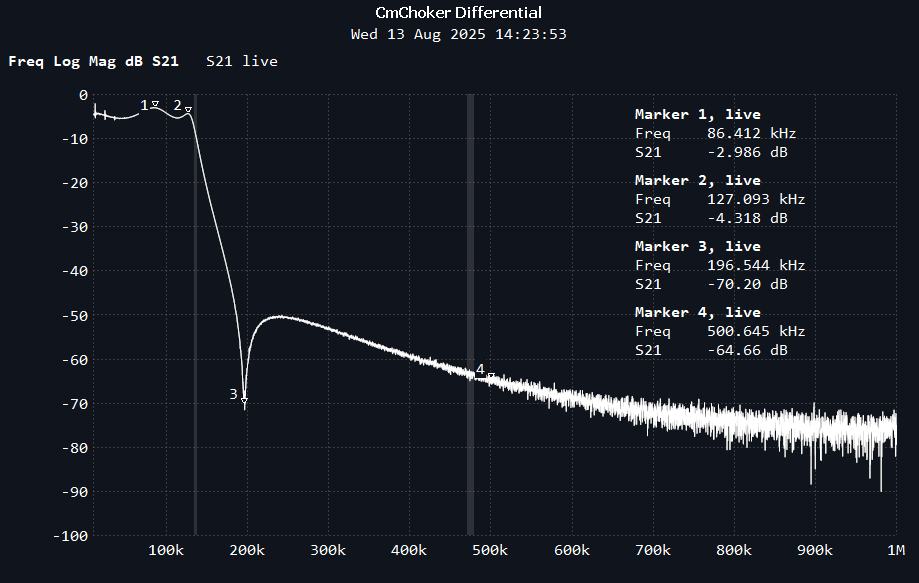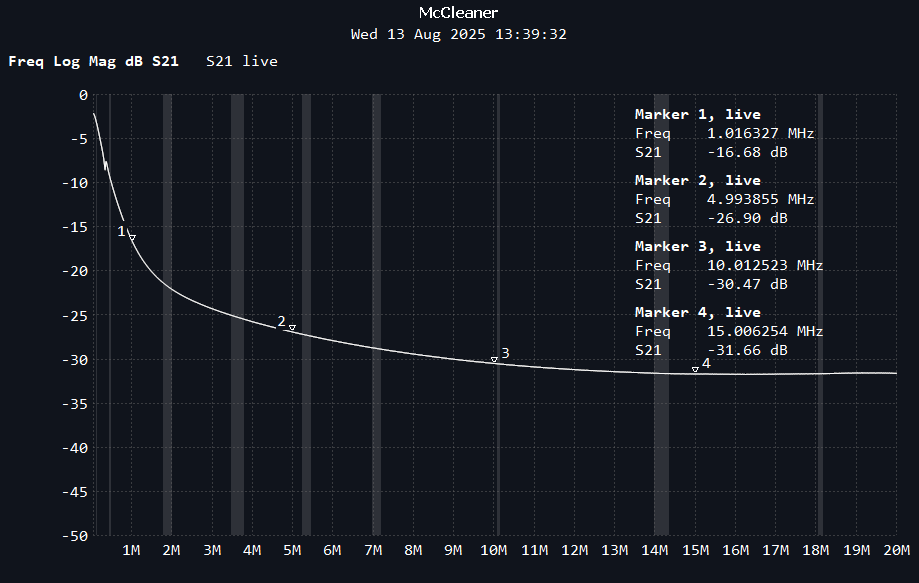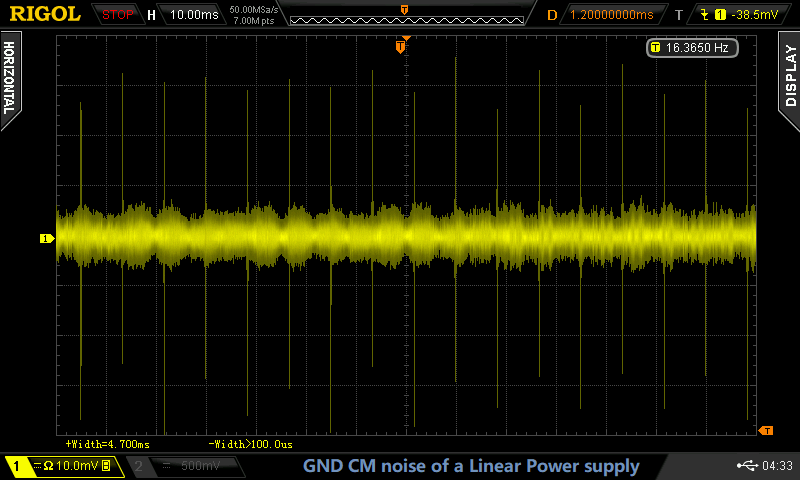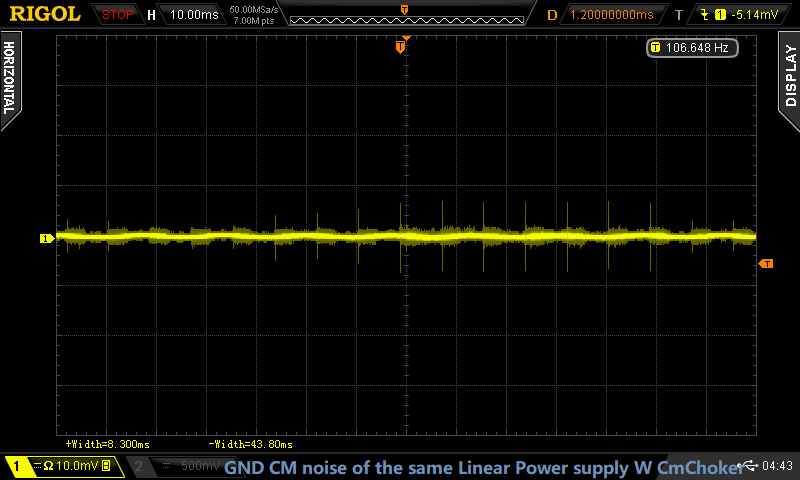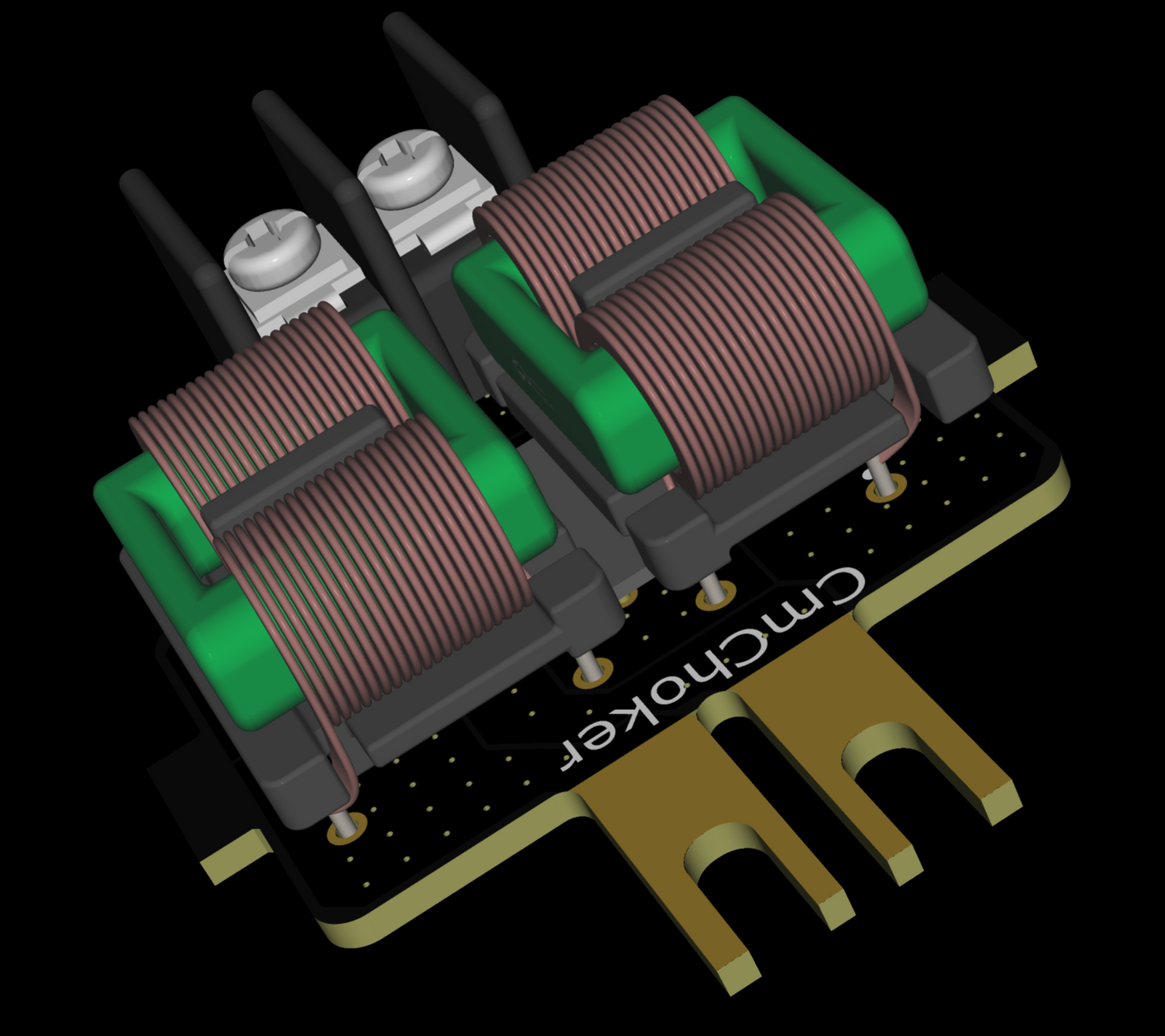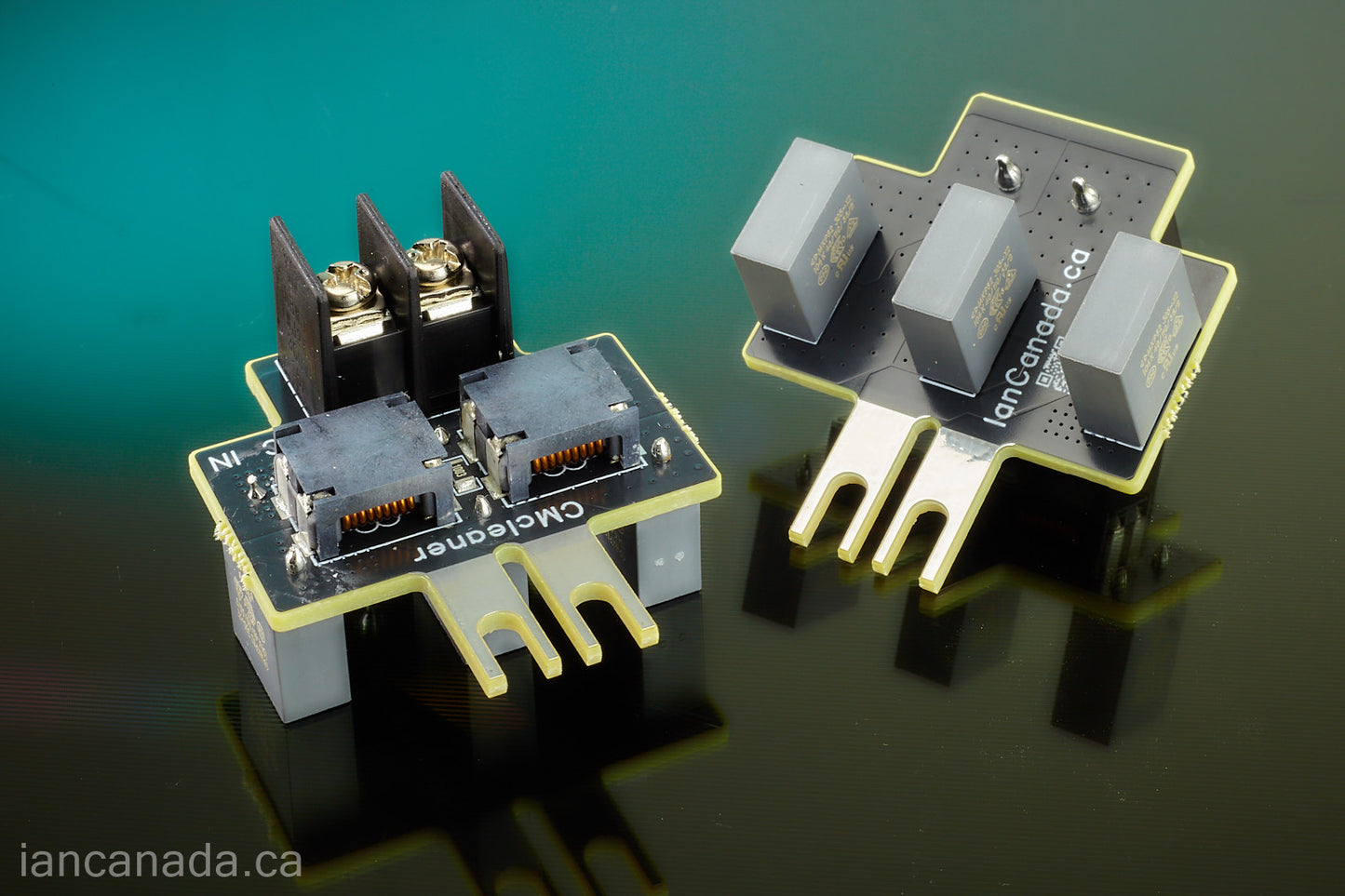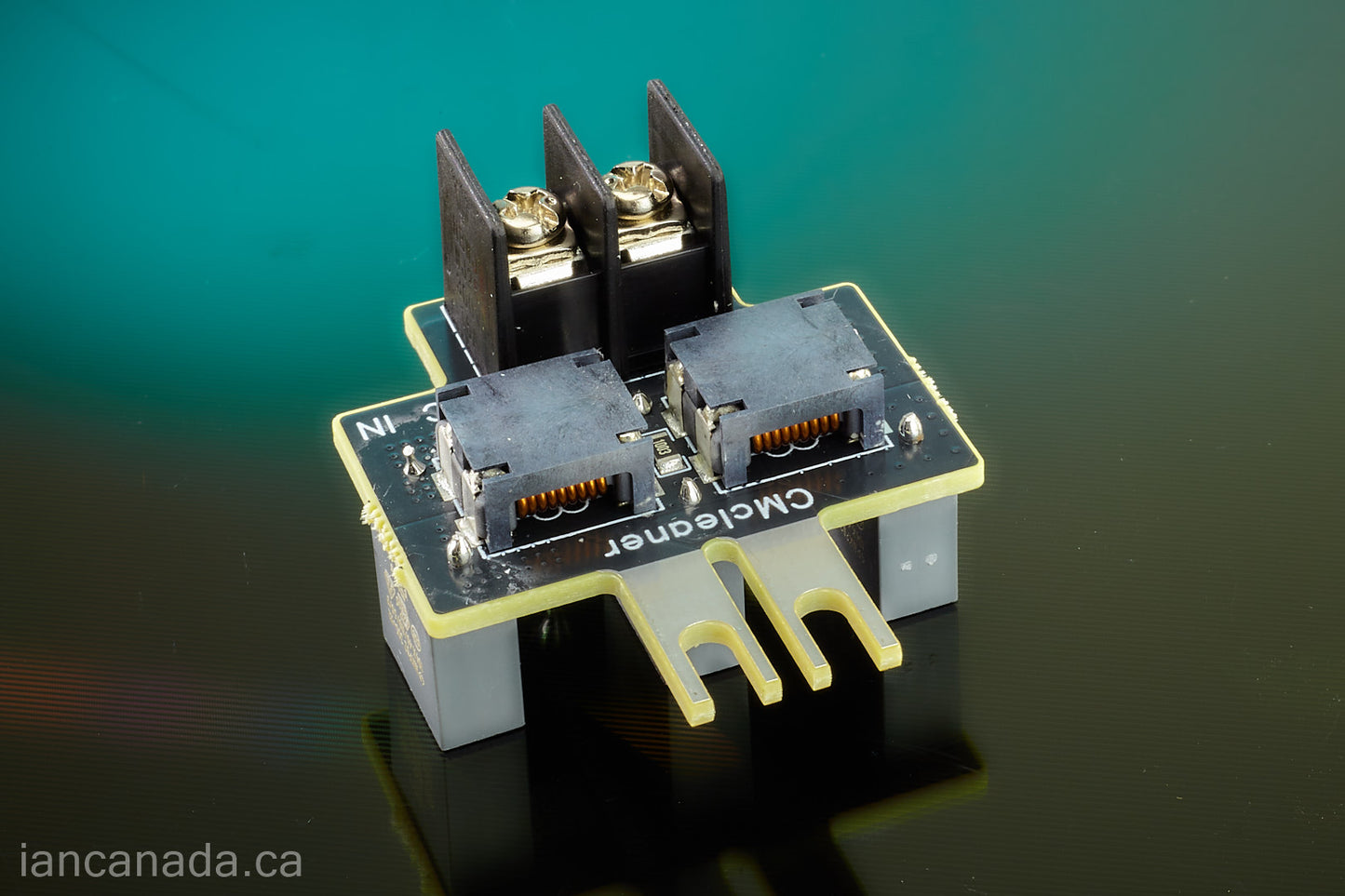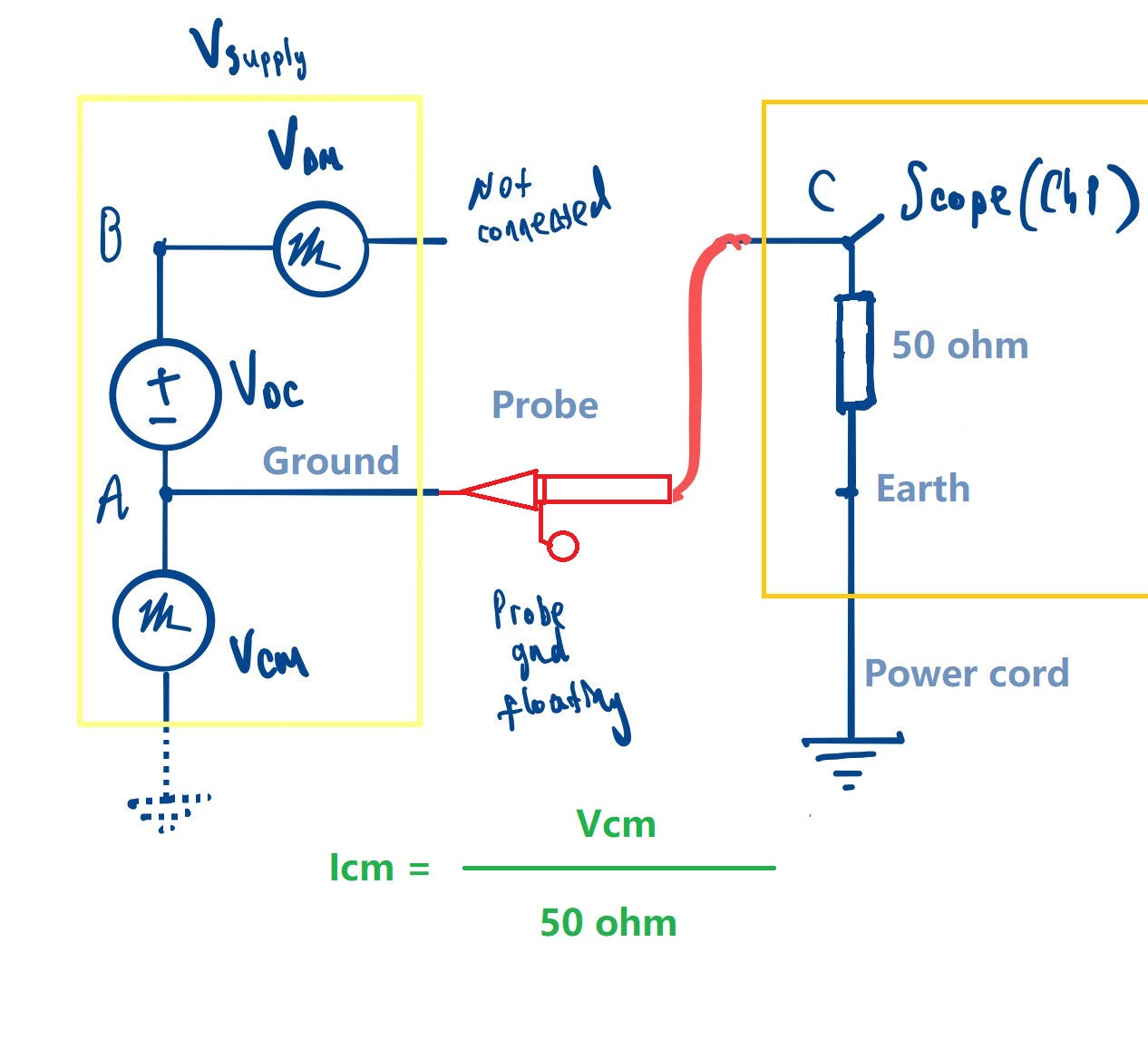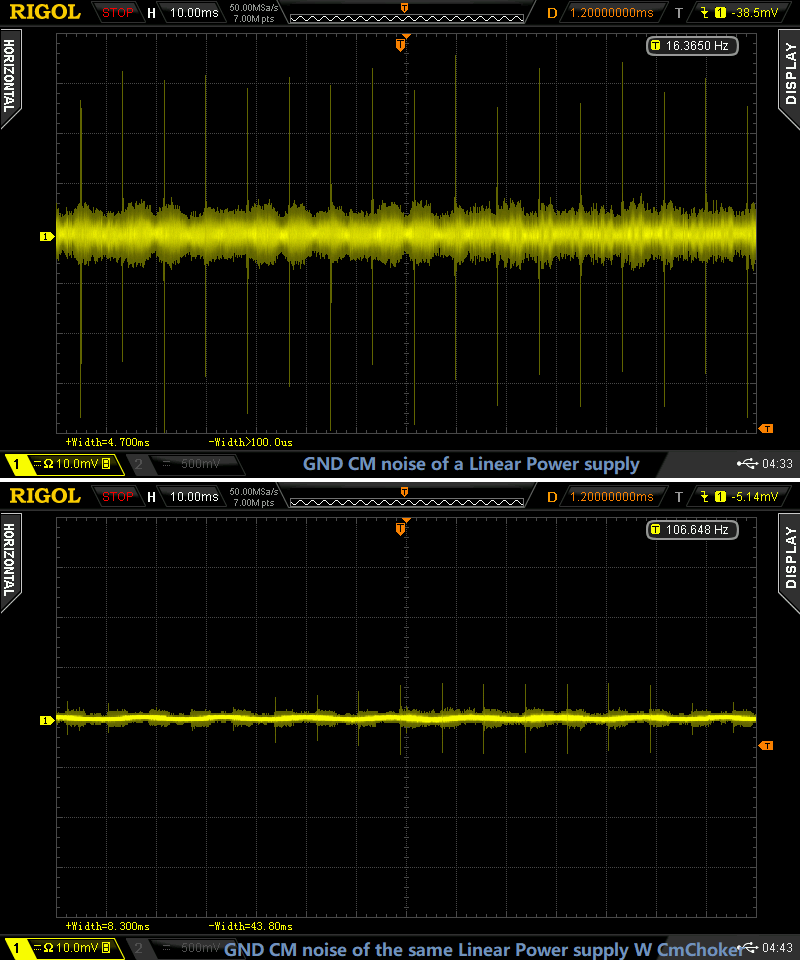INTRODUCTION
CmChoker is a two stage high current wide voltage common mode filter to efficiently suppress the common mode noise that is introduced from the AC power transformers.
CmChoker is specially optimized for audio applications, it can significantly reduce the affecting of the common mode noise to the DAC, clock and other sensitive circuits when installed to the input of Linear or ultracapacitor/battery power supply.
SPECIFICATIONS
Input voltage: AC 3V-250V
Rated current: 5A
DCR: 50mOhm
Common Mode Attenuation (CMA)
0 db @ 0Hz, -20.58dB @ 10kHz, -48.15dB @ 669kHz, -47.76dB @ 1MHz, -38.21dB @ 5MHz

Differential Mode Attenuation (DMA)
0 - -3dB db @ 0-90Hz, -4.3dB @ 127kHz, -70.2dB @ 197kHz, -38.21dB @ 5MHz, -64dB @ 500KHz

How to use it with a LinearPi/Pro?
Install the CmChoker to the AC input terminal connector,
tighten the crews. Install the transformer output to the CmChoker input, then tighten the screws.

How to use it with an ultracapacitor or battery power supply?
Same as the LinearPi/Pro

What's result it would be expected from a CmChoker
The following measurement is the common mode noise current result in voltage over a 50ohm resistor between a LinearPiPro output ground and the earth. A 1182Q6 transformer is used as the AC input.
The envoutement is a typical basement of a house in Canada. There is no any other electronic device running within 5 meters.
The common mode noise that introduced from the transformer is pretty strong. The energy are mainly focused at the high harmonics of 120Hz

The second measurement is under exactly the same condition after installing a CmChoker between the LinearPi Pro AC input and the output of the 1182Q6 transformer.
It seems that the CmChoker is doing a good job. The common mode noise energy becomes much lower and exactly corresponding to the CMA testing result. Some 60Hz and very high frequencies are left but already much weaker.

#55B CmCleaner general purpose high current common noise filter
CmCleaner is also a two stage high current wide voltage common mode filter that uses standard TDK chokes to suppress the common mode noise. The performance should be similar with the generic ones where you can purchases online. CmCleaner's is not optimized for audio applications. So because of the performance at the low and middle frequency ranges is not that great, it's not as efficiency as the CmChoker to clean the common mode noise for audio frequencies from a transformer. However CmCleaner is pretty good at frequencies higher than 100MHz. So, it's still help when cascade with a CMChoker.
Input voltage: AC 3V-250V
Rated current: 6A
DCR: 10mOhm
Common Mode Attenuation (CMA)
0 db @ 0Hz, -16.68dB @ 1MHz, -26.9dB @ 5MHz, -30.47dB @ 10MHz, -31.66dB @ 15MHz

The story of dealing with common mode noise
1. What is the common mode noise
Common mode noise is kind of unwanted noise current that interferes with our circuit directly through ground or output of our power supply. The common mode noise doesn't exist in an ideal system. It only exists in the real world conducting from the environment.
Common mode noise doesn't pass the normal output to ground loop, so it makes the concept a little bit difficult to understand. But if we consider the system ground as an antenna that picks up noise current from a transformer and transmits noise to the earth/environment, it would be much easier to see the principle.
2. How the common mode noise interferes with our audio system
In a typical audio system, the common mode noise current will pass this loop: AC line (120V or 220V) - Transformer (or DC-DC) - Regulator/LDO - Audio circuit ground - earth. It will pollute the ground plate of an audio system causing noise voltage between different points of ground resulting in phase noise of clock, THD of DAC, noise of amplifier and a lot of things that degrades the sound quality. No matter how good the regulator/LDO were used, the common mode noise can not be eliminated, because it was introduced directly through the ground. To achieve the best possible sound quality, this kind of common mode ground noise has to be addressed.
3. Where the common mode noise comes from
Any device on the AC line that switches current will generate common mode noise. We have countless of these kinds of devices in our environment. Such as LED lights, TV, laptop/desktop, power adapters, fridge, cell phone, anything with motors, and many more. Even the linear power supplies, their rectifiers also work in switching mode. That's why the common mode noise is mainly focused on the harmonics of 120Hz. Because it can extend to very high frequencies, the common mode noise can be transformed even through the capacitance between the primary and secondary windings of a transformer.
4. How to measure the common mode noise
The common mode noise measurement is not that straightforward. The most common way is to use an expensive RF current probe. That's why people don't measure this noise as often as the different mode noise (power supply noise). But there is an alternative way that everybody can do it.
Just use a 100MHz or higher bandwidth oscilloscope, make sure the power cord has a ground pin that connected to the earth through the wall AC socket. Set the channel to AC coupling with 50 ohm input resistor rather than the normal 1Mohm. Keep probe ground floating (no connection). Now, we can see the common mode noise voltage over the 50 ohm resistor, thus the noise current can be calculated.

5. How to get rid of the common mode noise
There could be two methods:
A. The most straightforward way is to use a pure ultracapacitor or battery power supply to eliminate the common mode noise current by breaking the current loop. In the pure mode, the ultracapacitor or battery power supply will be 100% isolated from the power input, therefor the common mode noise can not be introduced because the noise current loop no longer exist.
However, the common mode noise can still be introduced as long as there is any chance to enter a recharge mode from the pure mode. So we may still need a CM filter even if we take this route.
B. CM filter is the most popular way to deal with common mode noise. Because the noise covers a wide frequency range, the common mode filter has to be optimized to get best possible noise suppression performance.
After three years of development and research, the CmChoker is confirmed to be the highest efficiency common mode noise filter for digital audio applications. The noise level can be reduced significantly after installing a CmChoper between the power supply input and the transformer output.











